How to Effectively Locate Wasps in Your Home
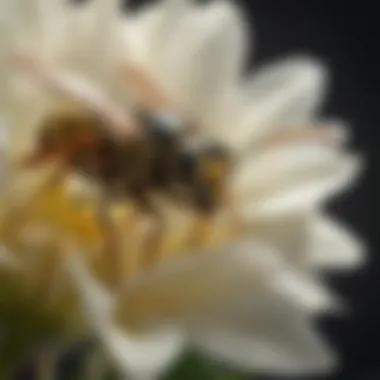
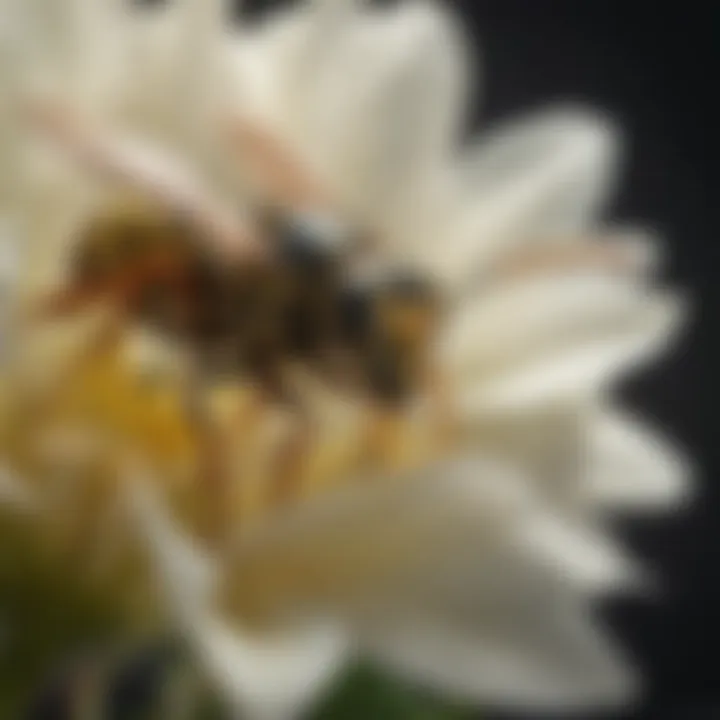
Intro
Finding a wasp in your house can be alarming. Wasps are not only capable of delivering painful stings, but their presence can indicate a larger issue, such as a nest nearby. This article helps you identify wasps and safely manage their presence within your home environment. By understanding their characteristics, behaviors, and nesting habits, you can take the necessary steps to detect wasps and prevent infestations. Additionally, we will explore eco-friendly control measures for safe removal of wasps.
Understanding Pests
Definition of Pests
Pests are organisms that can cause harm to property or affect human health. Insects such as wasps, ants, and bees can often invade homes, searching for food or places to nest. Their presence can be disruptive and sometimes dangerous. Wasps, in particular, are more aggressive than other stinging insects and may attack if they feel threatened.
Importance of Pest Identification
Identifying pests accurately is crucial for effective management. Misidentifying a wasp as a harmless bee or flies can lead to inadequate prevention measures. Recognizing the species assists homeowners in determining the best course of action. Furthermore, knowing if the wasps are solitary or social can influence their removal strategy.
Marking out their nests is also important for safety, as more aggressive wasp species can pose significant risks to those nearby.
Prevention Techniques
Home and Garden Preventative Measures
Taking proactive measures is essential in preventing wasps from entering your home. Some effective strategies include:
- Sealing Entry Points: Check for gaps around windows or doors. Caulk or use weather stripping to block any openings.
- Trash Management: Ensure that garbage is tightly secured, and clean any spills around trash bins. Wasps are attracted to food residue.
- Removing Food Sources: Cover food when outside and store pet food indoors. Limiting food access reduces the likelihood of wasp encounters.
Seasonal Prevention Tips
Certain seasons see increased wasp activity. In late summer and early autumn, social wasps may become more aggressive in search of food. Here are some tips for this time:
- Limit Outdoor Activities: Avoid leaving food and drink exposed during outdoor events.
- Inspect Areas Frequently: Regularly check under eaves, in trees, or around crannies for new nests.
Eco-Friendly Pest Control Solutions
Overview of Sustainable Practices
Sustainable practices can effectively control wasp populations without harming the environment. Using non-toxic approaches minimizes the impact on other beneficial insects and overall biodiversity.
- Traps: Consider using DIY traps made from sugar water and vinegar to capture wasps without using harmful chemicals.
- Natural Predators: Introducing natural predators, such as certain birds, can help manage wasp populations around your home.
Natural Remedies and Their Effectiveness
Natural remedies can sometimes deter wasps without the need for chemicals. Though their effectiveness can vary, they are worth exploring:
- Peppermint Oil: Mixing peppermint oil with water and spraying it near wasp nests can deter them due to their strong scent.
- Soap and Water Solution: Mixing soap with water in a spray bottle can create a barrier that suffocates wasps when they land on treated surfaces.
These methods may not completely eliminate wasps, but they can significantly reduce their numbers and prevent new nests from forming.
Understanding Wasps
Understanding wasps is crucial for several reasons. First, wasps can become a nuisance when they invade homes, making it necessary to identify and deal with them effectively. This section provides insight into what constitutes a wasp, how they differ from their close relatives, the bees, and which species typically find their way indoors. By knowing these specifics, homeowners can better prepare for wasp encounters and take appropriate action.
Biological Classification
Wasps belong to the order Hymenoptera, which also includes bees and ants. Their scientific classification places them in the subclass Apocrita. Common wasp families include Vespidae and Sphecidae, with the yellow jacket and paper wasp being familiar examples. Their lifecycle consists of four stages: egg, larva, pupa, and adult. This biological understanding is essential as it highlights the growth stages of wasps, helping homeowners identify their presence based on the life stage encountered.
Differences Between Wasps and Bees
While wasps and bees may seem similar, they have notable differences. Wasps tend to have slender bodies and are generally more aggressive. They have smooth bodies with little to no hair, aiding their streamlined design for hunting. On the other hand, bees usually have rounder bodies covered in hair, which is essential for pollen collection. Additionally, wasps feed on protein-rich substances, often preying on other insects, whereas bees primarily gather nectar and pollen from flowers. Understanding these differences assists homeowners in correctly identifying the insects they encounter, allowing for more precise management actions.
Common Species Found Indoors
In residential areas, several wasp species might make their presence known. The yellow jacket is one of the most common species found indoors. It is recognizable by its distinctive yellow and black coloring. Another frequent visitor is the paper wasp, known for its umbrella-shaped nests, often found in sheltered areas around homes.
Moreover, the bald-faced hornet, despite its name, is a wasp that is black and white and notorious for its aggressive tendencies. Recognizing these species is significant, as it not only helps in identification but also in understanding their behaviors, allowing homeowners to implement more effective control strategies.
"Understanding the biological nature and behavior of wasps is a foundation for effective control methods and safety practices in your home."
Signs of Wasp Activity
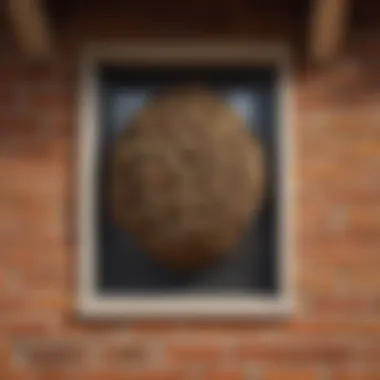

Recognizing the signs of wasp activity is a critical component in identifying their presence within your home. Understanding these indicators not only allows for early detection of wasps but also assists in implementing effective management strategies. Wasps can become a nuisance, posing risks to both comfort and safety. Therefore, being able to identify key signs can empower homeowners to take appropriate action before the situation escalates.
Visual Indicators
Visually identifying wasps and their activities provides essential clues about their presence. Look for wasp nests, which can vary in size and characteristics. Nests are often built in sheltered areas, such as attics, eaves, or hidden corners of garages. They typically appear as paper-like structures, made from chewed wood fibers mixed with saliva. The nests are often round or oval and can be quite intricate. Observing wasps repeatedly entering and exiting a certain area is another strong sign of nesting activity.
It is also helpful to watch for wasps flying in straight lines to and from specific locations. This behavior suggests a consistent source, likely their nest or a food source. When inspecting outside, look for foraging wasps around discarded food items or sugary substances, as these attract them.
Auditory Clues
Listening for wasps can offer additional insight into their activity. Wasps produce a faint buzzing sound when they are in flight. This sound can become more pronounced when they are active in larger numbers. If the sound seems concentrated in a specific area, it may indicate that a nest is nearby. Paying attention to such auditory cues can help homeowners locate potential nests without visual confirmation.
Silence can also be telling; fewer sounds indicate that wasps may be less active during cooler temperatures or at night. Observing times when the buzzing changes can be a clue for when to conduct searches.
Odor Recognition
Wasp nests often emit a chemical odor, particularly when disturbed. This smell can range from a slightly sweet to a pungent scent, and it may be more noticeable during warmer months. Noticing this odor can be a sign that a nest is nearby. Understanding this olfactory cue can aid homeowners in narrowing down their search locations.
It’s also worth noting that certain food items, especially those high in sugar or protein, can attract wasps. If you smell something unusual and it coincides with increased wasp activity or sightings, it's prudent to investigate further.
Being vigilant about signs of wasp activity can prevent larger infestations, ensuring a safe living environment.
Identifying Wasp Nests
Identifying wasp nests is crucial for effective pest management in your home. Nests signify not only the presence of wasps but also reveal potential safety risks. Knowing where to find these nests can help prevent unexpected encounters that may result in stings. Furthermore, understanding their location aids in planning effective removal strategies. The insights presented in this section emphasize the importance of careful observation and informed action when dealing with wasp infestations.
Common Nesting Locations
Wasp nests can be found in various locations within and around the home. Understanding these common sites increases your chances of locating a nest before it becomes a problem. Here are typical nesting locations to keep in mind:
- Eaves and Overhangs: Wasps often choose to build nests in sheltered areas such as under roof eaves or overhangs. These locations provide protection from the elements while keeping their nests hidden from view.
- In Trees and Shrubs: Many wasp species prefer building their nests in trees or large bushes. Look for nests in branches or dense foliage.
- Sheds and Garages: Unused or cluttered sheds and garages can be attractive spots for wasps. They seek out quiet spaces to create their homes.
- Gutters and Downspouts: These areas can be overlooked but may serve as nesting sites, especially if debris collects and provides shelter.
- Attics and Ceiling Spaces: In some cases, wasps may enter through small openings and build nests in the dark corners of attics or false ceilings.
Identifying these locations requires a thorough inspection of the property.
Nest Characteristics
Recognizing the characteristics of a wasp nest is key to identifying the type of wasp in your home. Various species demonstrate distinct nest designs and textures.
- Material Composition: Wasp nests are generally made from chewed wood fibers mixed with saliva, resulting in a paper-like structure. Unlike bee hives, which are wax-based, wasp nests can appear more fragile and are often grayish in color.
- Size and Shape: The size of the nest usually varies but can range from a few inches to several feet across, depending on the species. Nests are typically round or oval in shape with a distinct entrance hole.
- Hierarchy of Cells: Inside the nests, you might see a series of hexagonal cells. These are used for rearing larvae. In some nests, this organization is quite visible, indicating a well-established colony.
- Location of Nest: As previously mentioned, placement is important. Nests high above the ground, often tucked away and hard to reach, indicate a degree of safety which the wasps prefer.
Remember, safely identify the nests before proceeding with removal techniques. Avoid disturbing the nests to prevent provoking the wasps.
Identifying the nests correctly allows homeowners to take the necessary actions to either remove them or seek professional assistance. By recognizing both common locations and nest characteristics, one can mitigate risks associated with wasp infestations.
Effective Search Techniques
Searching for wasps in your home is crucial for ensuring a safe living environment. Effective search techniques provide a structured approach to detect these insects before they become a larger problem. By pinpointing their nests and understanding their habits, homeowners can take proactive measures. It minimizes the risk of wasp stings and other potential hazards. Moreover, knowing how to methodically search for wasps helps distinguish between various insects, allowing for quick identification and action.
Systematic Inspection Methods
To properly conduct a search for wasps, one should follow a systematic inspection method. This begins with a visual survey of the home’s interior and exterior. Key areas to inspect include:
- Eaves and Fascia Boards: Check under the eaves and alongside fascia boards where wasps tend to build nests.
- Sheds and Outbuildings: Look in overlooked spaces like sheds, garages, and other outbuildings where nests are common.
- Underneath Decking or Porches: These dark spaces are ideal for wasps seeking shelter.
- Windows and Doors: Inspect the areas around windows and doors for any entry points or nests.
This method helps in creating a comprehensive search that increases the chances of finding wasps or nests. Be sure to approach these areas cautiously.
Utilizing Lighting to Spot Wasps
Lighting can significantly aid in finding wasps. Wasps are more active in specific conditions, particularly during the day. Use natural sunlight or an artificial light source to help illuminate areas that are dark or shadowy. Here are a few tips for effective lighting usage:
- Use a Flashlight: At dusk or in dimly lit areas, a focused flashlight can reveal wasp activity.
- Look for Movement: Wasps are often seen flying, especially near their nests. Bright light can highlight their path, making them visible.
- Inspect Light Fixtures: Wasps may be drawn to light. Check around outdoor fixtures or under porch lights for unexpected activity.
These lighting strategies can help identify wasps that may otherwise go unnoticed, providing an advantage in detection.
Time of Day Considerations
The time of day plays an essential role in wasp searching strategies. Wasps are generally more active during warm daylight hours, increasing the likelihood of encounters at this time. Early morning or late afternoon tends to be ideal for observation. Some key considerations include:
- Dawn and Dusk: These times may present wasps returning to their nests or becoming active, allowing for easier detection.
- Temperature Factors: On cooler days, wasps are slower and easier to spot, making these days preferable for searching.
- Peaceful Hours: During calmer times of the day, wasps are less aggressive, allowing homeowners to look for nests without excessive risk.
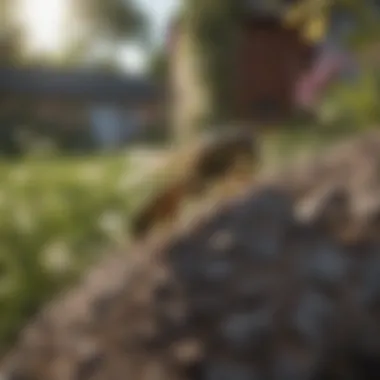
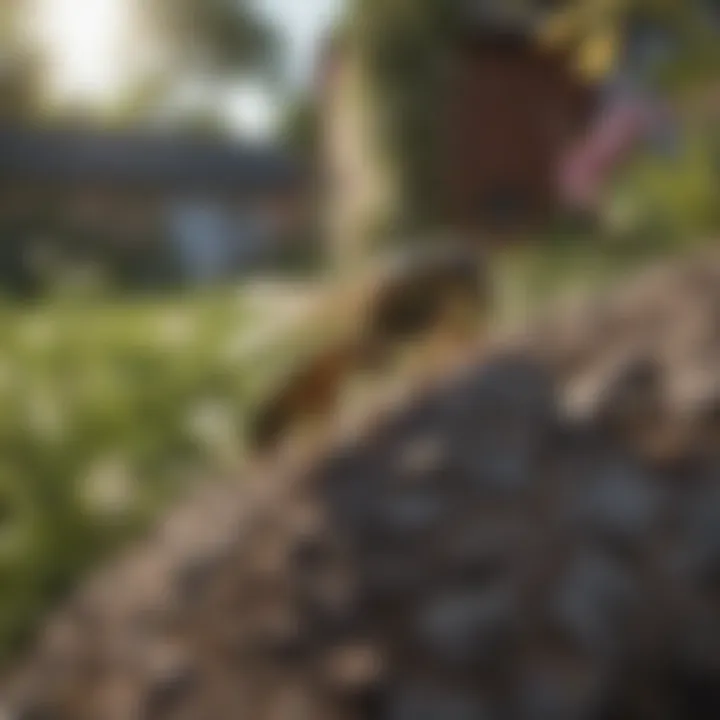
By factoring in the time of day, homeowners can maximize their chances of successfully identifying and managing wasps in their living spaces.
Safety Precautions
When dealing with wasps in the home, prioritizing safety is essential. Wasps can be aggressive, especially when their nests are disturbed. Understanding safety precautions helps in preventing incidents and ensuring a safe approach to identification and removal. By implementing these measures, households can significantly reduce the risks associated with encounters with wasps.
Personal Protective Equipment
Utilizing personal protective equipment (PPE) is crucial when searching for wasps or their nests. Proper gear reduces the likelihood of stings, which can be painful and lead to more serious allergic reactions. The following items are recommended:
- Long-sleeved clothing: Wearing long sleeves and pants creates a barrier between the skin and potential stinging insects.
- Gloves: Protective gloves should be worn to cover the hands, reducing the risk if a wasp decides to sting.
- Face Shield: A face shield can protect the face, especially the eyes, which are vulnerable to stings.
- Boots: Closed-toe shoes are important as they prevent stings to the feet.
Investing in suitable PPE not only enhances safety but also provides peace of mind during the search.
Avoiding Provocation
It is vital to avoid provoking wasps. Certain actions can trigger aggressive behavior, leading to unsafe situations. Here are strategies to prevent provocation:
- Stay Calm: Quick movements may alarm wasps. Staying calm reduces the chances of escalation.
- Avoid Swatting: Swatting at wasps can provoke them. Instead, remain still until they move away.
- Limit Strong Scents: Heavy fragrances can attract wasps. Avoid using strong perfumes or scented lotions before entering areas with potential wasp activity.
- Move Quietly: Approach areas where wasps might nest without loud noises. This minimizes disturbances that could alarm them.
These methods foster a more secure atmosphere while investigating.
Responding to Stings
In the unfortunate event of a wasp sting, prompt and proper responses are crucial for alleviating discomfort and preventing complications. Here’s how to effectively manage a sting:
- Remove the Stinger: Unlike bees, wasps do not leave their stingers behind. If stung, check to see if a stinger is present and, if so, remove it gently.
- Clean the Area: Wash the affected area with soap and water to prevent infection.
- Apply Ice: To reduce swelling and pain, applying an ice pack wrapped in cloth can be beneficial. Limit ice exposure to about 20 minutes at a time.
- Monitor Symptoms: Keep an eye on any unusual signs after stings, such as increased swelling or difficulty breathing, which may indicate an allergic reaction. In such cases, medical attention becomes necessary.
- Take Antihistamines: Over-the-counter antihistamines can help alleviate itching and reduce swelling.
Prompt and effective response to wasp stings can mitigate discomfort and prevent serious health issues.
Wasp Behavior Insights
Understanding wasp behavior is crucial for effectively locating and managing them within your home environment. Knowledge of their behavioral patterns can assist you in anticipating their movements and possible nesting locations. This section examines key behavioral insights, such as aggressive tendencies and food attraction, which are significant for house owners.
Understanding Aggressive Patterns
Wasp aggression varies among species, but certain signs may indicate heightened defensiveness. Wasps are generally more aggressive when they feel their nest is threatened. They can react swiftly to perceived dangers, which can include disturbances near their nests or even sudden movements nearby. Knowing that yellow jackets, for example, have aggressive tendencies can help you maintain distance and avoid confrontations.
When searching for wasps, note any buzzing noises or swarming behavior. This can signal a nearby nest or an attracted group of wasps. If you do approach an area with suspected wasp activity, do so with care, and observe their behavior from a distance.
Wasp aggression may also spike during late summer and into fall. During this period, their food resources fluctuate, and their colonies have reached full size. Understanding the timings of this aggressive behavior can help you plan inspections during calmer periods.
Food Sources Attracting Wasps
Food sources play a significant role in attracting wasps into your home. They are opportunistic feeders and will investigate any available food. Common attractants include sweet substances like sodas, fruit, and sugary foods. Additionally, protein sources such as meats may also draw wasps.
- Outdoor Food: When hosting outdoor events, ensure that food remains covered. Leftover scraps can lead to wasps gathering in numbers.
- Trash Management: Always cover trash cans and promptly dispose of any food remnants. Wasps are known for foraging near garbage.
- Gardens and Fruits: Ripened and fallen fruits from trees or shrubs in your garden can serve as a strong attractant.
Being mindful of these food sources can mitigate the chances of wasps encroaching upon your living spaces. Consider routine checks around food areas and waste disposal sites to monitor for potential wasp activity.
Properly managing attractants is just as important as physically searching for wasps when trying to ensure a wasp-free home environment.
Understanding both aggressive patterns and food sources can provide you with the insight needed to prevent wasp intrusions. By adopting proactive measures based on these behaviors, you stand a better chance of keeping your home free from wasps.
Preventive Measures
Preventive measures are critical in managing wasp presence in and around the home. By taking proactive steps, homeowners can significantly reduce the likelihood of wasps nesting in their living spaces. Effective prevention not only minimizes the risk of stings but also keeps the home environment more comfortable. Understanding the key elements of prevention can aid homeowners in creating a wasp-free zone.
Sealing Entry Points
Sealing entry points is one of the most essential preventive strategies. Wasps can easily find their way into homes through small openings and cracks. Common areas to inspect include:
- Windows and Doors: Check for gaps in windows and doors that might allow wasps access. Use weather stripping or caulking to close any gaps.
- Ventilation Openings: Examine vents and fans where wasps may enter. Installing mesh screens can help filter out these pests.
- Structural Cracks: Look for cracks in walls or foundations. Make necessary repairs to mitigate invincible entry.
Taking the time to secure these entry points can greatly reduce the chances of wasps infiltrating the home.
Reducing Outdoor Attractants
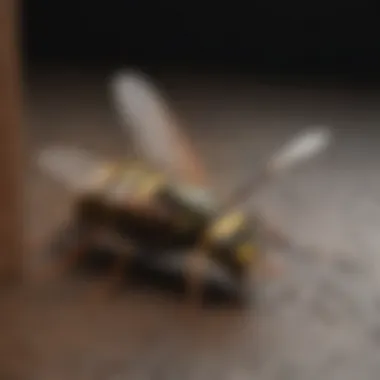
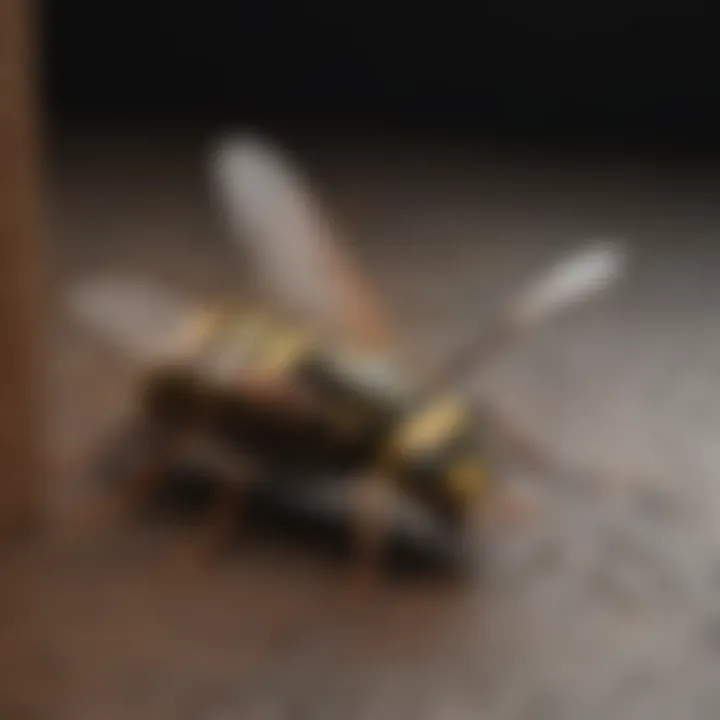
Another effective preventive measure is reducing outdoor attractants that may lure wasps closer to your home. This involves managing food sources and nesting materials that may entice them. Key practices include:
- Proper Waste Management: Ensure trash cans are tightly sealed. Wasp populations are drawn to food residue, especially sweets and proteins.
- Managing Outdoor Fruit: Overripe fruits falling from trees can attract wasps. Regularly clean up fallen fruit to remove potential food sources.
- Minimizing Open Beverages: During outdoor gatherings, cover drinks to prevent wasps from being attracted. Use lids or covers when possible.
- Landscaping Attention: Certain plants can attract wasps. Consider landscaping choices that are less appealing to these insects.
By undertaking these preventive measures, homeowners can significantly decrease the chances of a wasp encounter. It fosters not only a safer home but also a more pleasant outdoor experience.
Removal and Management Strategies
Understanding how to effectively remove and manage wasps is crucial for maintaining a safe home environment. Wasps can be aggressive, leading to potential stings that can cause allergic reactions or smart pain in most individuals. Therefore, developing a strategy that combines both prevention and removal is essential. There are various methods to remove wasps, and knowing when to tackle it yourself or seek professional assistance can help homeowners maintain peace of mind.
DIY Removal Techniques
For many homeowners, the thought of removing wasps might seem daunting, but DIY techniques can be effective if conducted safely. Here are various methods that can be employed:
- Traps: You can set up simple traps using plastic bottles filled with a sugary liquid. Cut the top of the bottle, invert it, and place it back into the bottle. The sweet scent attracts wasps, and they can enter but seldom escape.
- Soap and Water Solution: Mixing water with dish soap in a spray bottle creates a solution that can suffocate wasps when sprayed directly on them. Ensure you aim carefully to avoid provoking them.
- Natural Repellents: Certain natural scents, such as peppermint oil, can deter wasps. Mixing peppermint oil with water and a few drops of dish soap can serve as a deterrent when sprayed in areas where wasps are active.
"Prevention is often better than treatment. Addressing the source can save time and anxiety later on."
Careful handling is vital. Always consider wearing protective clothing, such as long sleeves and pants, to reduce the risk of stings. Also, undertake these activities when outdoor temperatures are cooler, as wasps tend to be less active during these times.
When to Seek Professional Help
While DIY methods can work, there are situations when professional help is necessary. Here are some indications that you should consider hiring an expert:
- Large Nests: If you discover a large nest, DIY removal could be dangerous. Larger nests indicate a higher concentration of wasps, enhancing the risk of aggressive behavior.
- Allergies: Individuals with known allergies to wasp stings should never attempt to remove wasps on their own. The risk of severe allergic reactions necessitates immediate professional intervention.
- Persistent Infestations: If wasps return repeatedly, it signals an underlying problem. A pest control service can identify the source and apply long-term solutions, something that DIY methods may not fully address.
In particular, professionals have access to specialized equipment and insecticides that can manage pests more effectively while ensuring safety for you and your family. Don't hesitate to reach out if you feel uncertain or overwhelmed.
By combining DIY methods with professional services when necessary, homeowners can effectively manage wasp populations in and around their homes.
Understanding Wasp Ecology
Understanding wasp ecology is crucial for anyone attempting to locate and manage wasps within their homes. It highlights the significance of these insects in our environment, while also shedding light on common misconceptions. Many people view wasps as mere pests, failing to appreciate their valuable roles in both nature and human habitats.
Role in Ecosystem
Wasps serve as critical components of our ecosystems. They are natural predators of various pests that can be troublesome for gardens or crops. Wasps help in controlling populations of insects like caterpillars, flies, and aphids, thereby maintaining a balanced environment.
Moreover, certain types of wasps contribute to pollination as they move from flower to flower. While not as effective as bees, their role in pollination supports the growth of various plants and crops. The presence of wasps can thus indicate a healthy ecosystem, highlighting that their removal can disrupt this balance.
"Wasps are often misunderstood; they are not just nuisances but play significant roles in pest control and pollination."
Mitigating Misconceptions
Misconceptions about wasps are widespread and often lead to unnecessary fear. Many people believe that all wasps are aggressive and ready to sting at any moment. In reality, the aggression of wasps often depends on the species and context. Most wasps are not inclined to sting unless provoked or their nests are threatened.
Awareness is essential. By understanding their behavior, homeowners can better prevent unwanted encounters. For example, many wasps forage for food in gardens. By keeping outdoor areas clean and managing food sources, you reduce the chance of attracting them.
Additionally, educating others about the beneficial roles of wasps can change perceptions. Encouraging a more positive view might help in adopting a coexistence strategy rather than outright extermination.
In sum, understanding the ecology of wasps can foster a more informed and balanced approach to dealing with them in residential settings. Recognizing their value can aid in managing them effectively while minimizing conflict.
Closure
In the framework of this article, the conclusion serves as a crucial synthesis of the comprehensive guidance provided on locating and managing wasps within the home. The importance of understanding wasps extends beyond mere identification; it encompasses safety, prevention, and ecological awareness. By enabling house owners to recognize the signs of wasp presence, understand their behavior, and identify nesting locations, they can take informed actions to mitigate potential threats.
Additionally, the knowledge imparted through this article supports the need for effective removal strategies and the implementation of preventive measures. These elements contribute to creating a safer living environment for families. Therefore, mastering these various aspects not only fosters a harmonious coexistence with nature but also underscores the practical benefits of preparedness and knowledge in everyday life.
Summary of Findings
Throughout the article, key insights have emerged regarding effective strategies to locate and understand wasps in residential settings. It is essential to recognize that wasps play a significant role in the ecosystem, yet their intrusion into our living spaces can pose risks. The systematic approach offered encompasses understanding the biological classification of wasps, signs of their activities, and effective search techniques.
Key findings include:
- Identification of visual, auditory, and olfactory signs denoting wasp presence.
- Techniques for safely inspecting high-risk areas where nests are likely to develop.
- The importance of safety precautions to prevent aggressive encounters with wasps.
This holistic perspective encourages proactive measures to both eliminate and prevent wasp activities within the home.
Future Considerations
Looking ahead, it is imperative to continuously monitor and adapt measures against potential wasp infestations. House owners should consider the dynamic nature of ecosystems and the factors that may influence wasp behavior, such as climate change and urbanization. Understanding wasp ecology will enable individuals to adopt more effective preventive strategies.
Moreover, ongoing education about pest management will enhance residents' ability to respond appropriately to wasp-related situations. Familiarity with local species and engaging with community resources can be beneficial. Encouragement of environmentally friendly practices can also support ecological balance while addressing the presence of wasps.
By remaining vigilant and informed, house owners can maintain a sustainable and safe living environment.



